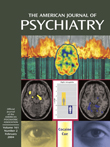To the Editor: I thank Drs. Crane and Freudenreich for emphasizing that descriptive and empirical studies of psychopathology are as important as neuroscientific discoveries in any brain-mind syntheses and for drawing attention to the seminal work by Chapman and colleagues as an early example of careful attention to phenomenology and psychopathology. Dr. Freudenreich provides a good example of a subtle yet remarkable difference between “delusional memories” versus “memory of a delusion.” Unless neuroscientists play attention to such details, the powerful new sciences may end up chasing elusive targets.
Dr. Jones criticizes my article for providing a simple model of schizophrenia based on quantitative change in dopamine function. The target article is a model of psychosis, not schizophrenia (p. 18 in my article). While it argues for a prominent role for dopamine, it does not claim any exclusivity for it (p. 18). Dr. Jones points out that dopamine-based therapies do not work for nearly one-third of the patients, and therefore, these dopamine-related ideas may not have relevance to their psychosis. This is a fair critique. However, little is known about the biology of nonresponders that is reliable and replicable. There are no diagnostic or predictive markers of nonresponse. The only consensus is that some of them respond to clozapine, but then clozapine binds to over a dozen receptors, precluding any simple conclusions. Thus, the reason I did not attempt to explain the nonresponder issue is not that it is unimportant but because I found it difficult to synthesize the information into a coherent narrative.
Dr. Gray criticizes the article for omitting reference to earlier articles by him and his colleagues, most prominent among them the article in
Behavioral and Brain Sciences (1991). The omission is regrettable, it was unintentional, and I missed that article just as it seems to have escaped the attention of MEDLINE. Regardless, the article by Dr. Gray and colleagues also tried to address how a neurobiological lesion might lead to symptoms by means of the disruption of a core psychological process. However, there are major differences. The focus of their claim is a putative neuroanatomical lesion (of the hippocampus or accumbens), not the clinical picture or phenomenology. The core psychological lesion in their model is a “failure…to integrate stored memories…with ongoing motor programs,” as opposed to concepts of reward/salience, as in my article. Apart from the fact that antipsychotics are seen as dopamine blockers, little attention is paid to the nature and phenomenology of antipsychotic response and less still is said about the process of symptom resolution. As for the critique that I unfairly dismissed latent inhibition as a model of attentional abnormalities, some of the authors of the article by Dr. Gray et al. also see it as a model of attentional deficits
(1), and others question whether it models attentional deficits at all
(2,
3). Furthermore, the single largest clinical study of latent inhibition failed to find evidence for a disruption of latent inhibition or for the effects of treatment on latent inhibition
(4). Nonetheless, I agree with their final point: that this discussion belonged in the original article, not here as an afterthought.

